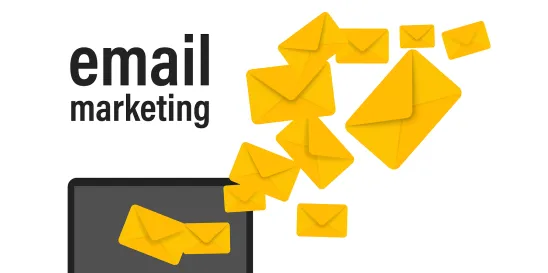In legal and professional services, content marketing and email marketing have become indispensable tools for firms of any size. These strategies not only keep lawyers and firms top of mind with clients and prospects but also showcase their expertise in specific legal areas.
By leveraging these content marketing an email marketing, lawyers and law firms can not only consistently engage with their clients, prospects and referral sources, but also effectively spotlight their unique expertise and insights in various areas of law. This potent combination serves as a powerful way to drive growth, increase visibility and enhance client relationships.
The Significance of Email in Marketing
With more than 4.3 billion email users worldwide and 333 billion emails sent daily, the reach of email marketing is unparalleled. Nearly 90% of marketers rely on this medium, attributing its importance to an impressive average return of $42 for every $1 spent. However, this high return on investment is contingent on the effectiveness of the strategy employed.
Strategic Content Marketing: Key to Engagement
For content and email marketing to yield desired results, the content shared must be of real value to the audience. This is crucial for establishing and nurturing relationships and is especially vital for smaller to mid-sized firms. These firms may lack the vast resources of larger counterparts but can level the playing field by effectively segmenting their audience and delivering highly relevant, niche content.
Types of Content to Publish
- Insightful Articles on Legal Developments: Keep your audience informed with timely updates on new laws, regulations and court decisions relevant to your clients.
- Practical Guides and How-To’s: Offer practical advice on common legal issues or procedures, providing clear, actionable guidance.
- Case Studies: Showcase your firm’s successes and expertise with in-depth case studies that highlight how you’ve helped clients overcome complex legal challenges.
- Industry Analysis: Provide your perspective on trends and changes within the industries you serve, offering valuable insights that clients and prospects might not find elsewhere.
- Thought Leadership Pieces: Position your firm’s lawyers as experts in their field with op-eds and articles on current legal issues and future industry predictions.
- Client eNewsletters: Regular e-newsletters can keep clients updated on firm news, upcoming events and recent publications or blog posts.
Leveraging Email Marketing
Email marketing serves as a crucial channel for distributing this valuable content to your contact lists (as long as your contacts are updated, so spend the time to ensure you have the right data for your key contacts). Integrating emarketing with your CRM can streamline this process, allowing for personalized content distribution. These systems can also automate newsletter distribution, ensuring regular engagement with your contacts.
Measuring Success Through Analytics
Most email marketing systems provide essential data on content performance. Dashboards can show which content resonates most and which contacts are most engaged. These insights are invaluable for making strategic business development decisions, allowing firms to focus on relationships with contacts interested in specific topics or content from particular lawyers.
Content Syndication and Media Pick-Up
For smaller to mid-size firms, using content syndicators like JD Supra can be an effective way to distribute content and gain media attention, especially for new blogs. This approach not only grows their audience but also places them in direct competition with larger firms, showcasing their expertise on a broader stage.
Final Thoughts
In conclusion, content and email marketing are more than just tools; they are integral parts of a law firm’s marketing mix. By producing valuable, targeted content and leveraging the power of email marketing, law firms of all sizes can enhance their market presence, establish thought leadership and build stronger relationships with clients and prospects. Whether you’re a small or a mid-size firm, these strategies offer a pathway to level the playing field and achieve business development success.




 />i
/>i
